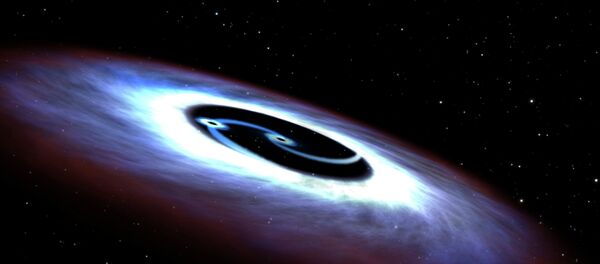The scientists thus proved that conventional lenses, mirrors and human eyes are all one needs to see a small black hole out there.
"Flashes of light like these happen each time a black hole snaps up accretion matter and heats it up to millions of degrees Celsius. They could also result from a jet of matter being “spit out” by a black hole and which previously were thought to be detectable with space-based X-ray telescopes only. We believe this is exactly the source of this polarized emission,” Moscow State University astronomer Vladimir Lipunov wrote in the July issue of Astrophysical Journal.
Lipunov and his colleagues first observed “spitting’ black holes while watching V404 Cygni — a microquasar and a binary system consisting of a black hole and a companion star in the constellation Cygnus.
The matter being pulled from the companion star forms an accretion disk around the black hole, which may become extremely hot. This accretion disk may become so hot, due to friction, that it begins to emit X-rays.
The disk also projects narrow streams of subatomic particles at near-light speed, generating a strong radio wave emission.
Only four microquasars have so far been found in our galaxy and none outside of it.
In June 2015, the Swift space observatory discovered that the Galactic black hole candidate V404 Cyg was undergoing another active X-ray phase, after over 26 years of inactivity.
Located about 6,000 light years away, V404 was discovered in the 1930s and has since produced three powerful flashes, which told astronomers a lot about its structure.
This helped the Russian astronomers to find out how the jet emission is formed and photograph the entire process.
The observations proved that one half of V404 is indeed a black hole and that even small black holes are capable of generating powerful jet emissions, just like their supermassive “cousins” do.




